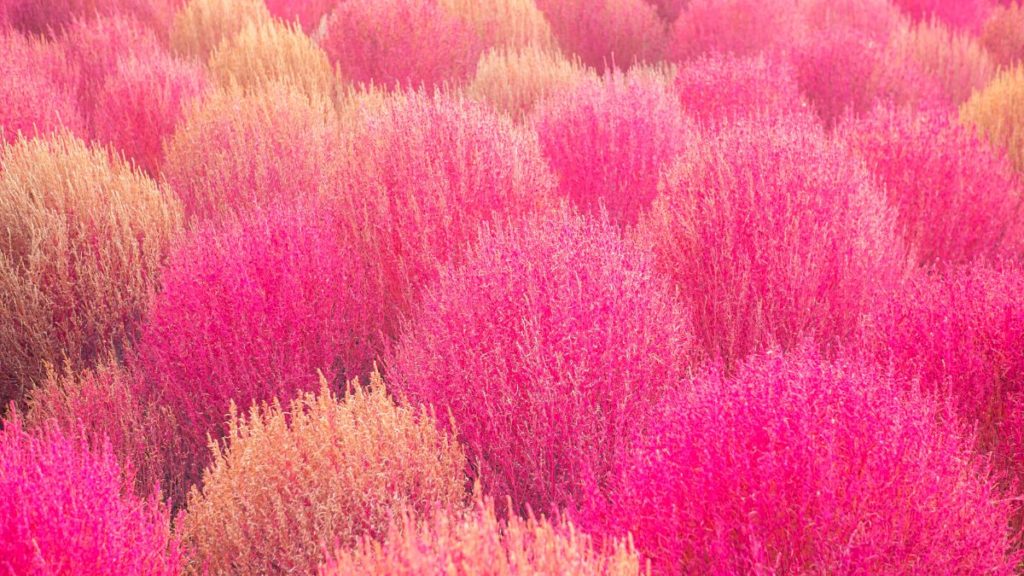
Native grasses of the Southeast are similar to the surrounding areas like parts of the Northeast and Prairies. Yet, there are some species unique to this region. As you read on and study the natives, you will discover there is a native that will do well in your landscape. For decades, Americans fell in love with non native plants while ignoring what we have or once had in our own backyard. Finally, that is changing as Americans and Canadians are looking for a more natural look and feel. We also have come to realize that natives are attractive, offer value and require little maintenance.
I hope to provide a good list of native grasses that offer decorative value.
Andropogon capillipes (Blue bear, chalky bluestem)

Grows naturally on dry sandy pine barrens from southern Virginia to Florida and Mississippi.
- Glaucous-blue summer foliage is clump forming that grows upright usually 2 to 3 feet (60-90 cm) tall.
- Prefers full sun and well drained soil.
- Very drought tolerant and thrives in zone 10.
- Hardy to Zone 7.
Andropogon glomeratus (Bushy beard grass)
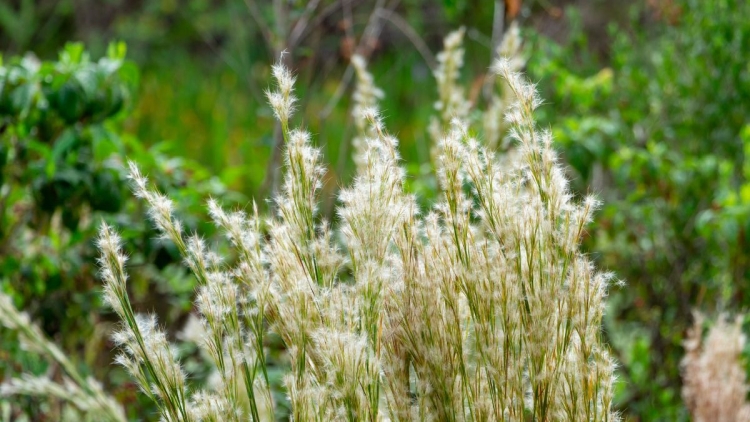
Inhabits low, moist ground, marshes and swamps in the eastern coastal regions.
- Typically 2 to 4 feet tall (60-120cm), green in summer turning copper-orange in autumn
- Flowers in September.
- Hardy to Zone 5.
Andropogon gyrons (Elliott’s broom-sedge)

Found in dry or moist fields in eastern states. Green in the summer, it turns a vivid orange in late autumn.
- A clump-forming grass grow 2 to 3 feet (60-90cm) tall.
- Hardy to Zone 5.
Andropogon ternarius (Split-beard broom sedge)
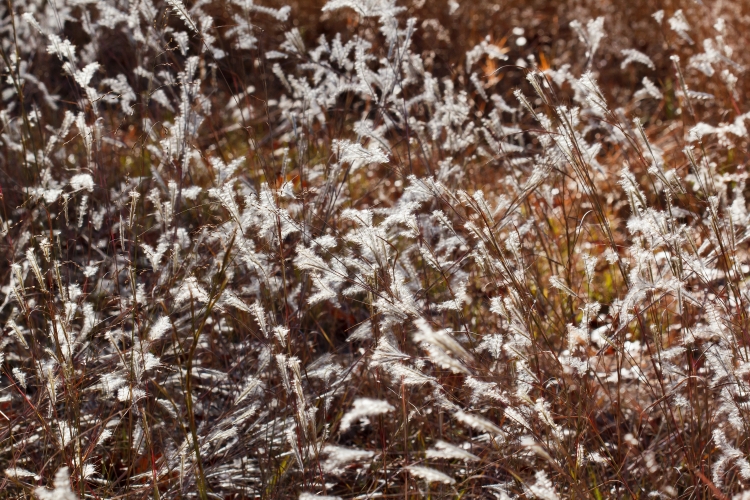
Native from southern Delaware, often on sandy soils along coastal plains to Florida and Texas, but also on clay soils in Georgia to Missouri.
- Summer foliage is glaucous blue-green, turning shades of purple, bronze, copper and red in fall.
- A beautiful, under appreciated plant worth having in your sun loving garden.
- Hardy to zone 6.
Andropogon virginicus (Beard grass, broom sedge)
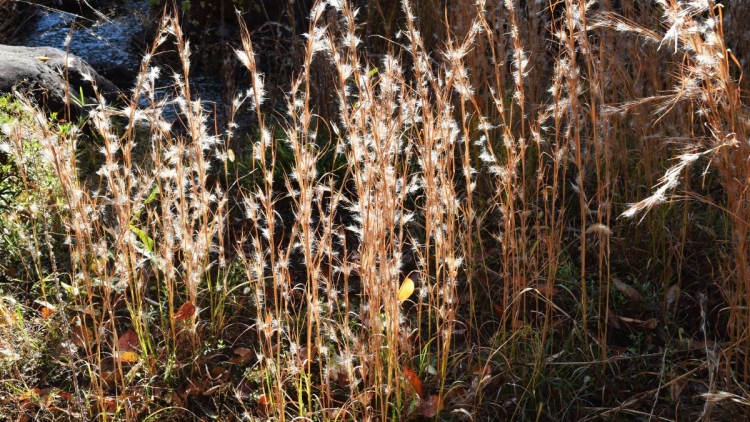
Native to much of North America, in open fields in various soil conditions.
- Strictly upright and clump forming, It grows to 4 feet (1.2m) tall. Turns bright orange in the fall. Requires full sun
- Hardy to zone 3 Blooms in mid September to early October. Prefers full sun and well drained soil.
- Very drought tolerant and thrives in zone 10.
- Hardy to zone 3.
Andropogon gerardii (Blue stem, Turkey grass)
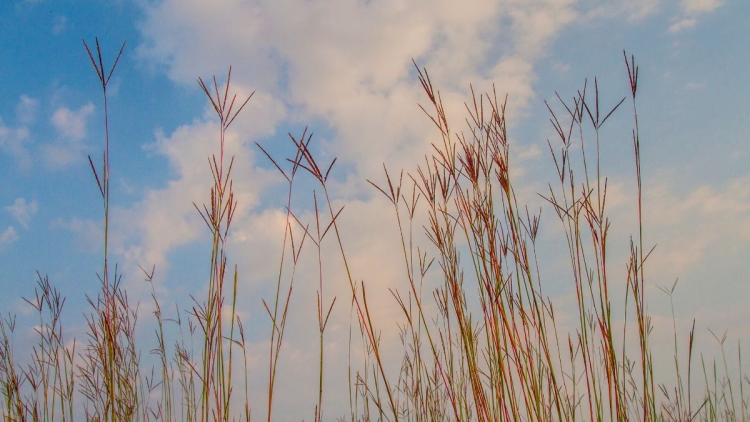
Grows on moist and dry soils, in prairies and open woods throughout much of the United States and Canada. Referred to as the Monarch of the prairie grasses, but grows throughout much of the southeast as well as long as there is an open sun filled area.
- The tallest North American member of the genus, it grows 5 to 8 feet (1.5-2.4m).
- Upright and strictly clumping, the blue-green foliage of summer turns to a rich orange and copper-red in autumn.
- Flowers or blooms appear in late August or early September vaguely resembling an upside down turkey foot.
- Blue stem can offer a dramatic display in your landscape no matter what.
- Hardy to Zone 3.
Chasmanthium latifolium (Indian wood-oats, river oats)
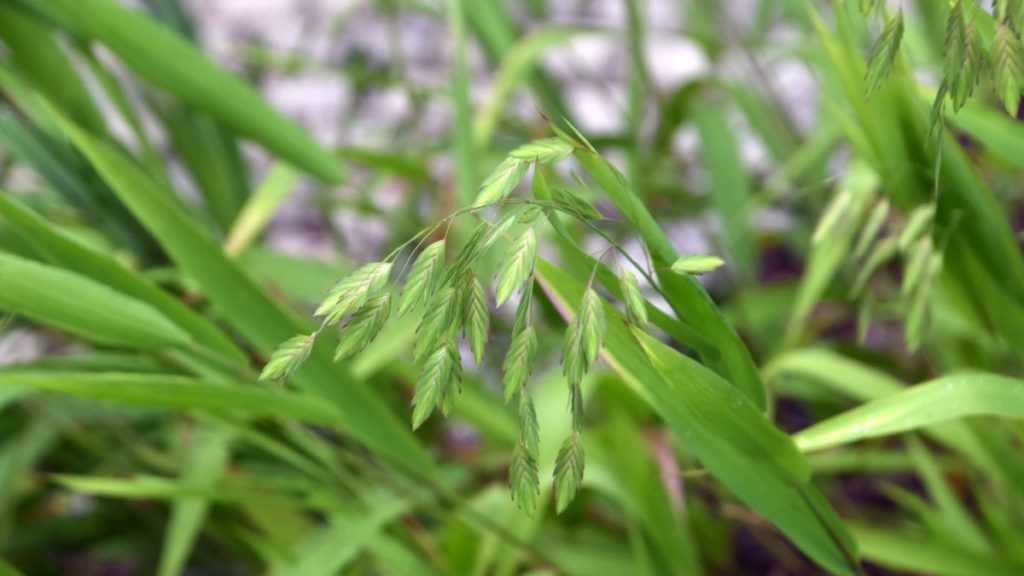
One of my favorite grasses, Chasmanthium covers much of the eastern and southeastern United states, including the lower Great Lakes region, into Pennsylvania and New Jersey.
- A warm-season, clump-forming plant the grows to 4 feet 91.2m) tall. It prefers rich soil and full sun, but does quite well in dry shaded areas too.
- The flat oat-like spikelets dangle in the breeze and turn a bronzed color by autumn and finally a buff color.
- Great in flower arrangements (fresh and dry)
- Plants stay erect in the winter and snow while offering seeds for birds and small animals.
- A must have in your native habitats and gardens.
- Hardy to Zone 5.
Ctenium aromaticum (Toothache or lemon grass)

Slender flowering stem to 4 feet (1.2 m) tall is native to the savannas, bogs and wet pines barrens from coastal Virginia to Florida and west to Louisiana.
- All part of this plant are aromatic, having a citrus like fragrance when crushed. Also found by some people to have analgesic properties useful in treating toothaches.
- Great for informal gardens and natural areas.
- Blooms in mid summer, need full sun and moisture.
- Hardy to Zone 8.
Cymophyllus fraserianus (Fraser’s sedge)
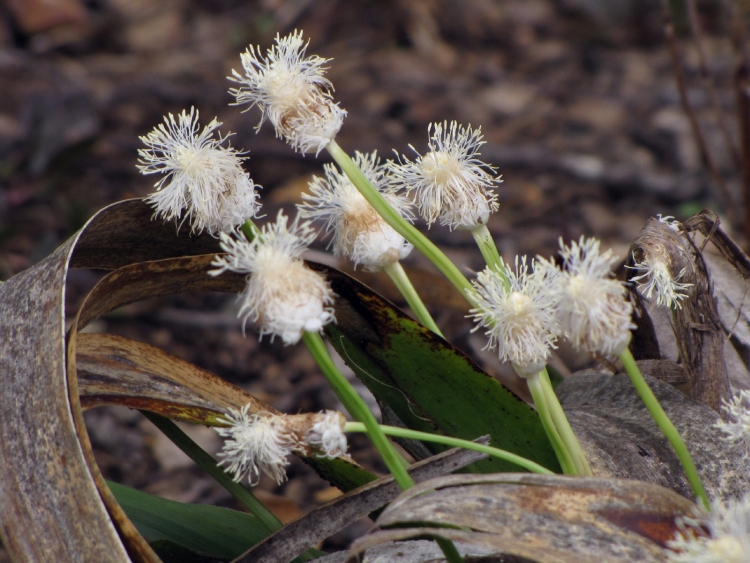
Named for its discoverer, John Fraser, this beautiful native is rare in nature and even more so in cultivation. Found locally on rich, sloping, upland woods and stream banks in the southeast.
- A cool growing clump former that blooms in May and June a short plant growing to 15 inches (38 cm) tall.
- A true ornamental worth growing for foliage or blooms.
- Requires partial shade, well drained soil with plenty of organic matter and steady moisture. Does well on shaded slopes but will tolerate dense deciduous shade.
- A must for your South woodland garden.
- Hardy to Zone 7.
Elymus glaucus (Blue wild rye)
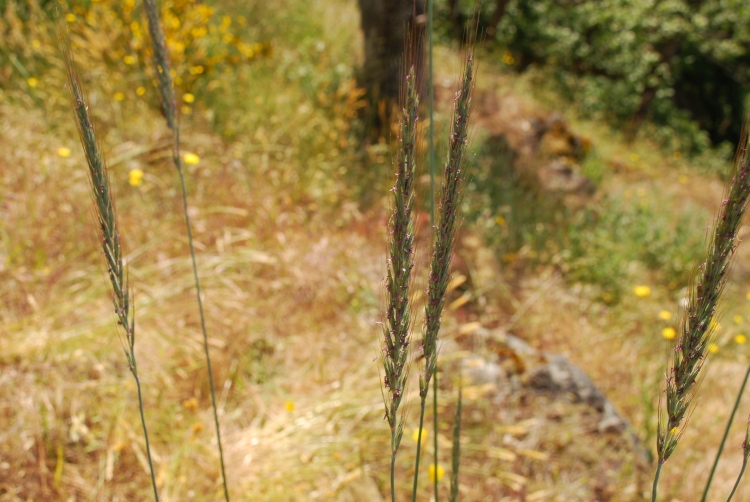
Native to moist and dry thickets.
- Clump forming, glaucous-blue foliage does well in natural settings, not cultivated much for yards and gardens.
Eragrostis elliotii (Elliot’s lovegrass)
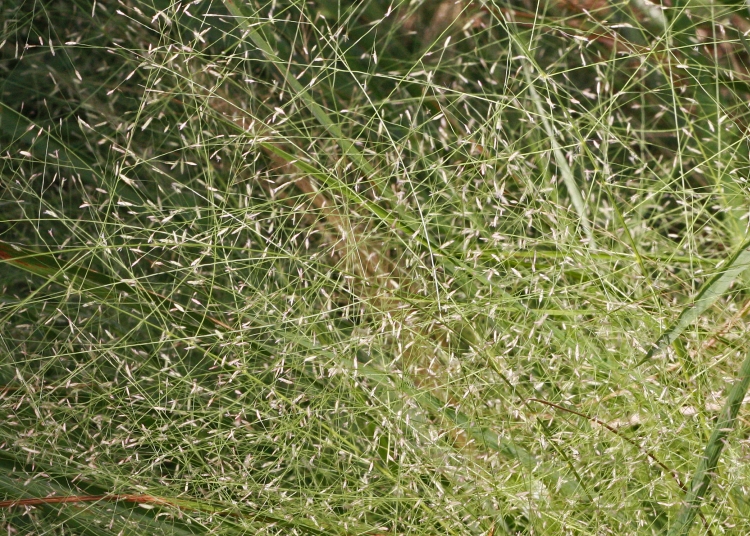
- A strikingly beautiful North American native mound grass that grows 3 to 4 fee (90-120 cm) tall.
- Airy flowers bloom in May and June.
- Very drought tolerant and requires well drained soil.
- Hardy to Zone 7 and into Zone 6 if soggy winter conditions can be avoided.
Eragrostis spectabillis (Purple lovegrass)

A sandy soil native in full sun from Maine to Minnesota and south to Florida and Arizona to Mexico.
- In late summer this grass produces volumes of fine textured flower panicles that appear almost purple.
- The foliage is unattractive, but who cares once this specimen comes to bloom/
- Less than 2 feet (60 cm) tall, it requires full sun and is quite drought tolerant.
- Hardy to Zone 5.
Eriophorum virginicum (Virginia cotton grass)
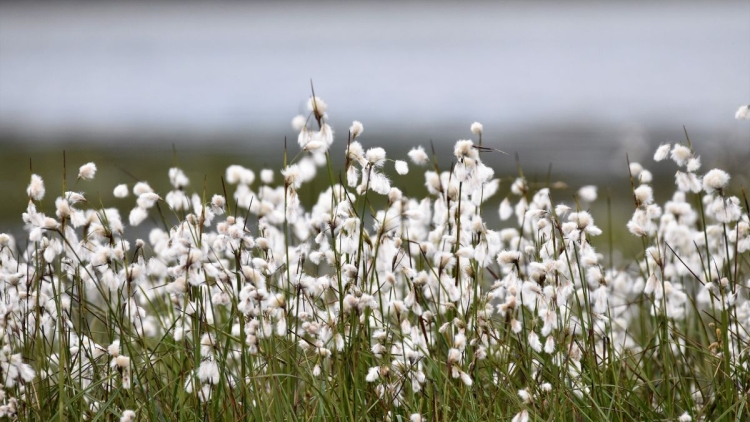
Native to swamps, wet meadows and bogs from Northeast Canada to Florida and Kentucky.
- Tufted clumps, bristle with white or tawny cotton like heads. Grows to 3 feet (1 m) tall.
Glyceria obtusa (Blunt manna grass)
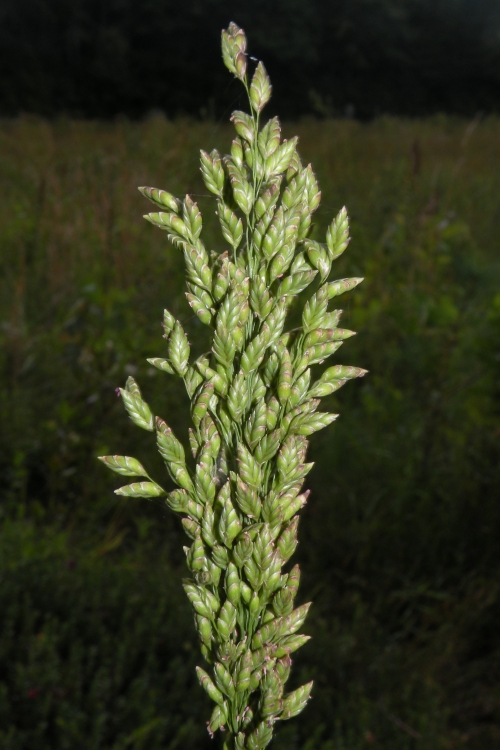
Native to marshy bogs from New Jersey to pine barrens in North Carolina.
- A bright yellow-green color adds to this grass that grows 2 to 3 feet (60-90 cm) tall.
- Spreads by rhizomes.
- A great food source for waterfowl.
- Tolerates warm humid summers.
- Hardy to Zone 4.
Muhlenbergia capillaris (Pink muhly)
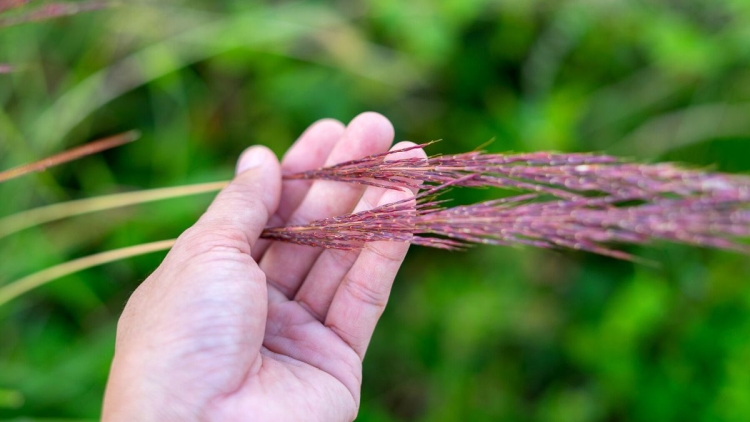
This beauty of the Northeast and lower Great Lakes states has no peer. Native mostly on sandy or rocky soils, prairies and pine barrens from Massachusetts, to Indiana and Kansas, south to Florida and Texas.
- The most highly ornamental of all the Muhly grasses, with dark green foliage topped by delicate flower panicles in vibrant pink to pink-red. Blooms in late summer to mid autumn.
- Effective as a single plant, but especially dramatic in groups and sweeps.
- Grows to 3 feet (1 m) tall.
- Drought tolerant and needs full sun.
- A must have in your southeast gardens.
- Hardy to Zone 6, possibly Zone 5.
Panicum amarum (Bitter switchgrass)
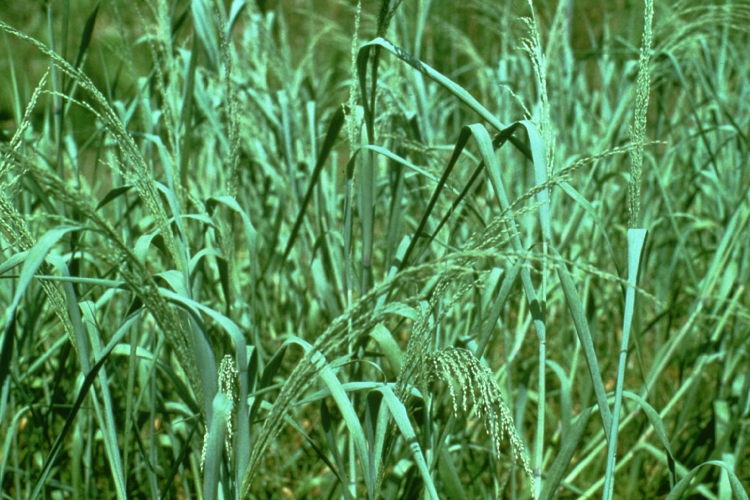
This native grass grows naturally along the coastal regions from New Jersey to Florida to Texas.
- The foliage appears to be a blue-gray to blue-green.
- A warm weather grass that grows from 3 to 6 feet (1-2 m) tall.
- Valued for coastal stabilization and offers good ornamental value in full sun, especially where soils appear to lack nutrients.
- “Dewey Blue” is a good cultivar of this species.
- Hardy to Zone 6, possibly to Zone 5.
Panicum virgatum (Common switchgrass)
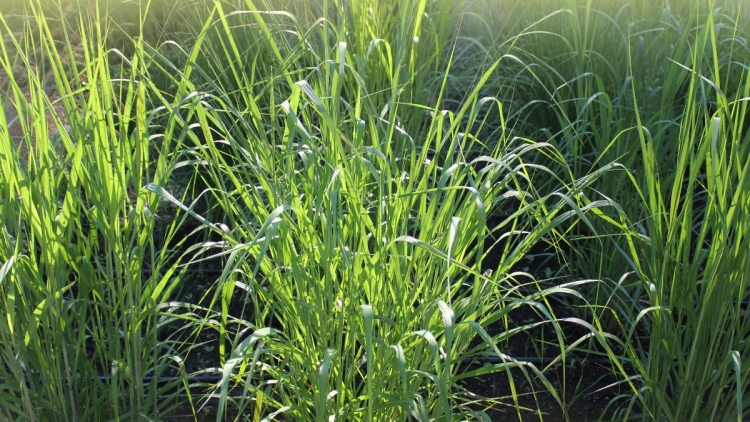
Native to prairies and open fields from eastern Canada through most of the United States except the west coast.
- One of the major components of the great American tall-grass prairie. diverse in size, growing 4 to 8 feet (1.2-2.4 m)tall. It always forms recognizable clumps.
- Prefers full sun where it grows erect, but will handle partial to light shade where it tends to be more lax.
- Depending on the cultivar, summer foliage can be green , powder-blue and some with streaks of red.
- “Dallas blues” grows to 7 feet and has beautiful purple flower heads.
- “Shenandoah” grows to 4 feet and as the season wears on, the blades turn a bright red to almost purple.
- “Cloud nine” is a glaucous blue-green, growing to 8 feet.
- With Panicum grasses, you can’t go wrong and there is a size just right for your garden or habitat.
- Panicums are very drought tolerant, erect (even in the winter if the snow isn’t to deep), produces seed for birds and wildlife. Various cultivars (and there are many) offer color as well.
- These warm season growers will add to your habitats
- Another must for any wildlife habitat.
- Check for zone hardiness, cultivars can vary from Zone 3 to Zone 6.
Rhynchospora colorata (White-top sedge)
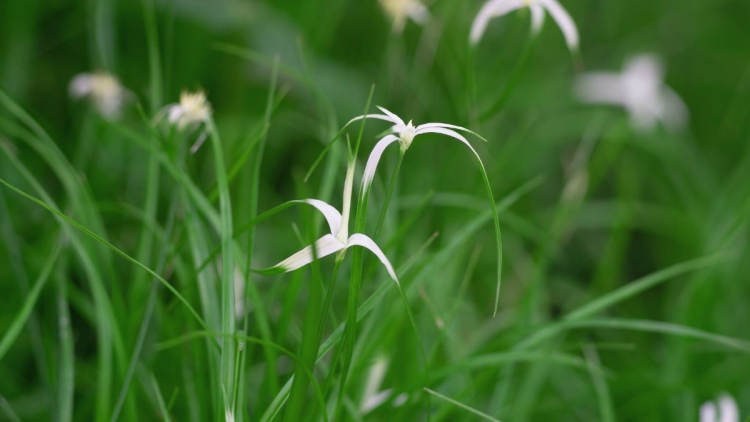
Native to moist and wet areas along coastal regions from Virginia to Florida to Texas.
- Short at 20 inches (50 cm) tall, blooming in late summer into winter in warmer regions.
- Grows in full sun to light shade in moist soils or shallow water of 2 inches.
- A great plant around ponds and water edges.
- Hardy to Zone 8.
R. latifolia (White top sedge)
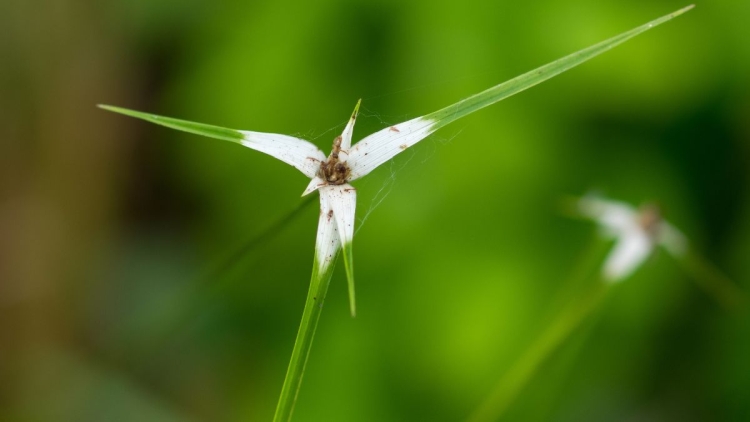
Similar to Rhynchospora colorata , found in swamps and wet areas from North Carolina to Texas.
- 32 inches (80 cm) tall
- Hardy to Zone 8.
Saccharum alopecuroidum (Silver plume grass)
Native to open, moist, sandy woods along the southeastern United States.
- A unique grass in that in seems to prefer shaded areas.
- A warm season species that blooms in late summer, grows to 10 feet (3 m) tall.
- Interesting for vertical accent in woodland gardens.
- Hardy to Zone 7.
Spartina bakeri (Sand cordgrass)
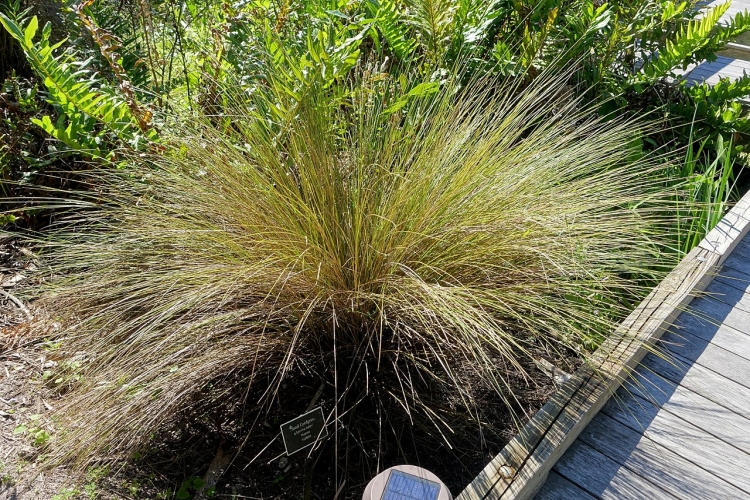
Unlike other cordgrass, this species is not a marsh grass. It grows in full sun and sandy soil from South Carolina to Florida to Texas.
- A clump forming plant that grows 3 to 6 feet (90-180 cm) tall.
- More and more people are finding this to be a great addition to their landscapes.
- Hardy to Zone 8.
Tripsacum dactyloides (Eastern gamma)
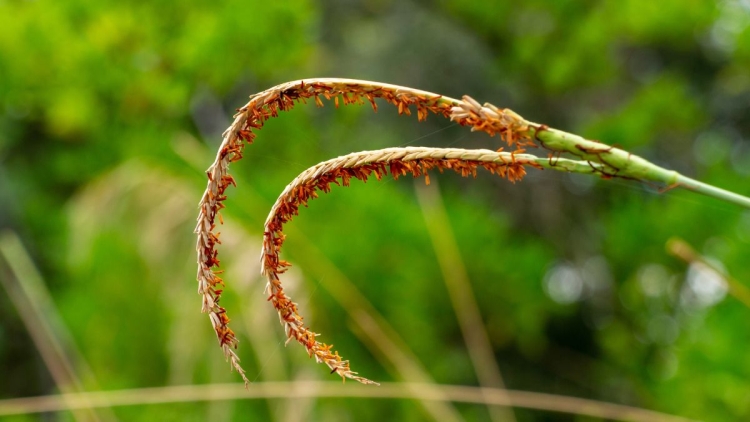
Native to stream bed and other wet regions throughout the southeast and beyond.
- A tall grass that grows to 8 feet (2.4 m) tall and blooms from June to September.
- Grows in full sun to light shade and requires wet feet.
- Hardy to Zone 5.
Zizania aquatica (Annual wild rice)
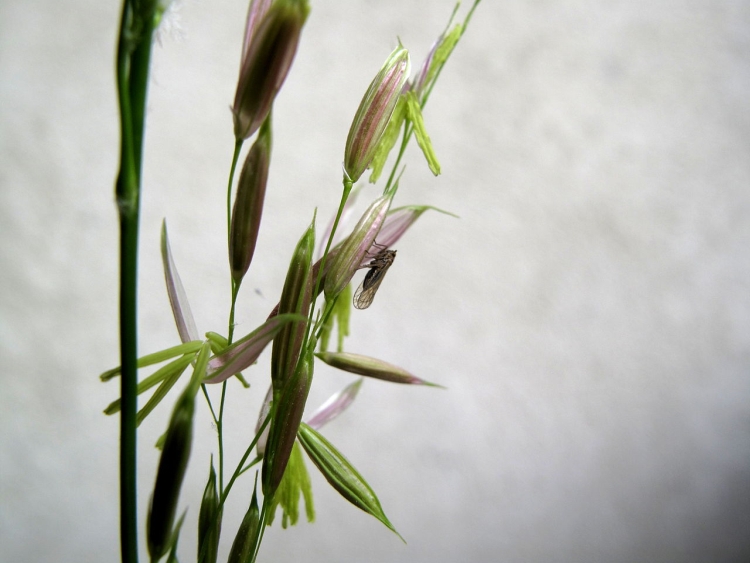
Not exactly what you would call a native grass, but many people grow it for decorative reasons.
- Native to fresh and brackish marshes, borders, streams and ponds from Maine to Michigan, south to the Gulf Coast where it may be a perennial.
- Once the source of edible wild rice, the flowers are graceful airy panicles to 9 feet (2.7 m) tall from mid summer to fall. Now an expensive delicacy.
- A stately addition to water gardens as well as naturalizing in wet areas where it provides shelter for birds and waterfowl.
- It is sometimes planted for these purposes in game preserves and refuges.
- The inflorescences are wonderful in cut or dried flower arrangements.
- Hardy to Zone 4.
As you develop your wildlife habitats and gardens, you will find a place and a love for native grasses. I know as time goes on, I have developed a real like and almost passion for natives. Do your research and follow the guide tips and once your natives are established, you can enjoy them for years to come.
